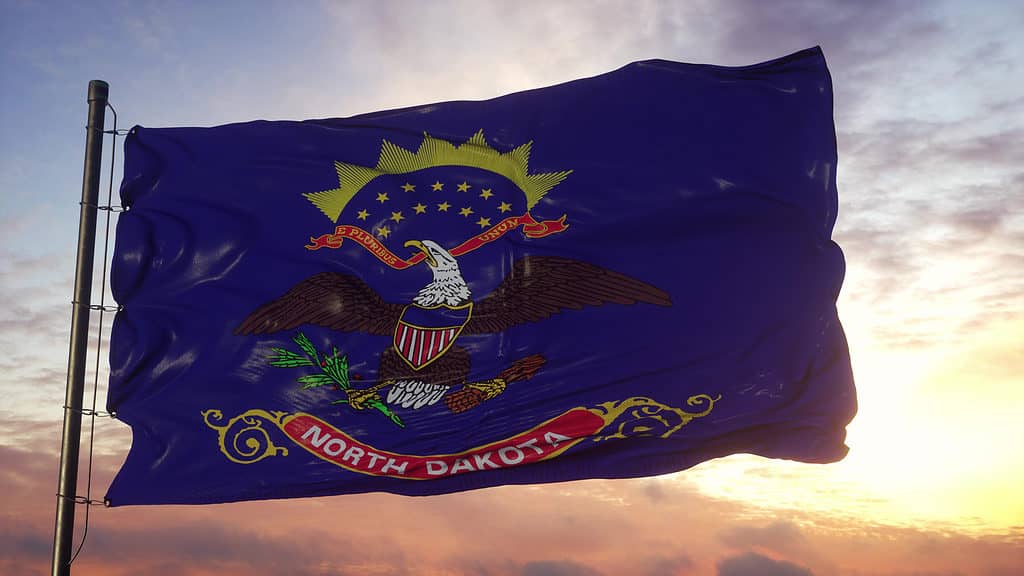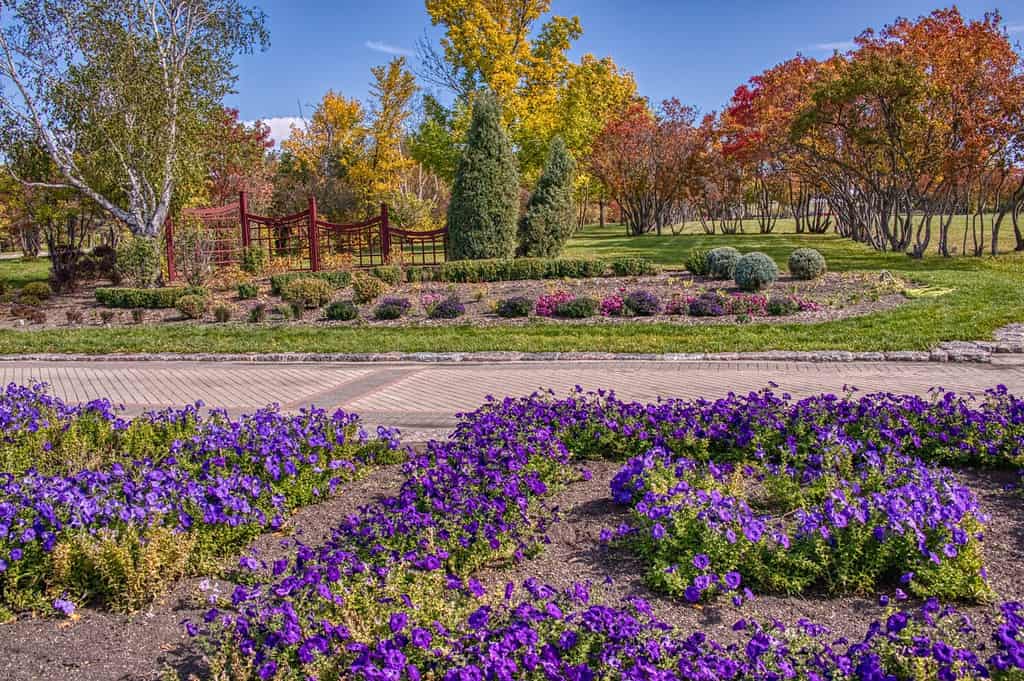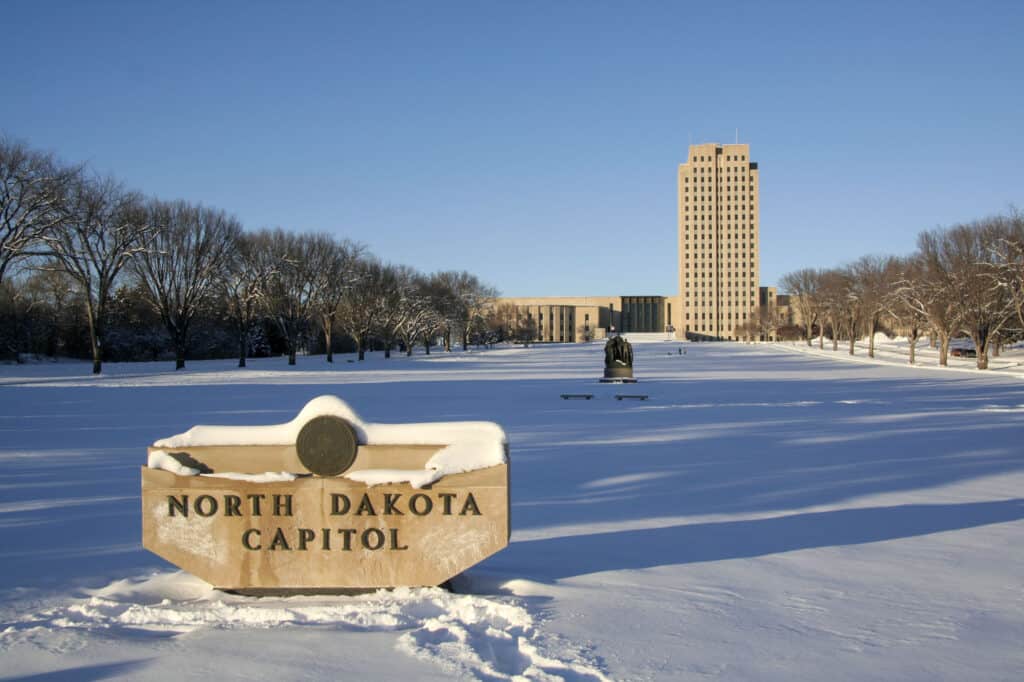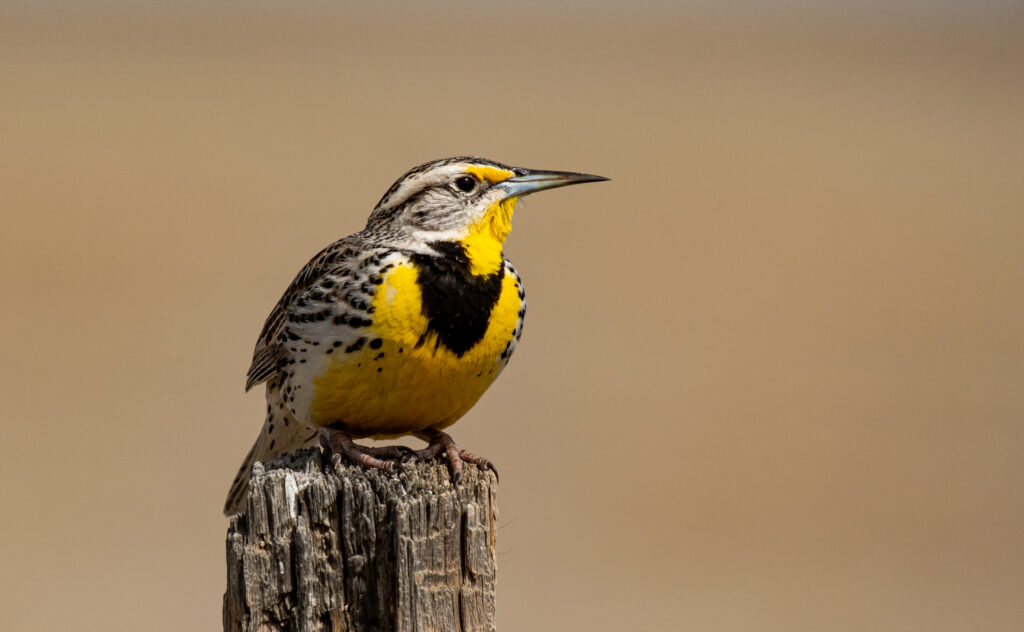The open countryside of North Dakota is majestic, ranging from the eastern region’s fertile Red River Valley, which is home to enormous fields of wheat, to the wide plains and undulating hills, the Missouri plateau, and the western region’s Badlands.

North Dakota has some of the most historic towns in the Midwest.
©Larich/Shutterstock.com
The state is referred to as the “Peace Garden State.” The International Peace Garden, a non-profit botanical garden with the goal of promoting global harmony and embracing peace, is on the international border between the U.S. state of North Dakota and the Canadian province of Manitoba.
The 1957 Legislative Assembly legally adopted the name because it was so well-liked at the time.
The International Peace Garden

There is something to see at the International Peace Garden all year long.
©Jacob Boomsma/Shutterstock.com
The International Peace Garden, located in the Turtle Mountains since 1932, is one of the continent’s most significant and beautiful landmarks. Numerous travelers from all over the world visit this special memorial to the camaraderie and harmony between Americans and Canadians.
The 2,300-acre garden is home to two beautiful freshwater lakes, flowers, and streams. Here you’ll find a wide diversity of North American wildlife and birds, as well as two picturesque hiking and driving routes. There are accommodations for holding weddings, conventions, and family reunions. Many people come here solely to camp!
Other Nicknames For North Dakota
The Richardson ground squirrels, which are common in North Dakota. One of the state’s nicknames is the “Flickertail State.” When sprinting or right before approaching its burrow, the animal makes a distinctive flicking or jerking motion with its tail.
Senate Bill Number 134, which proposed designating the Flickertail replica as the state’s official symbol, was defeated by the Legislative Assembly in 1953. North Dakota is also known as the Roughrider State. This moniker first appeared in a state-sponsored tourist campaign from the 1960s through the 1970s.

Theodore Roosevelt came to North Dakota to hunt bison.
©dezignor/Shutterstock.com
It alludes to Theodore Roosevelt’s formation of the First American Volunteer Cavalry to serve in the Spanish-American War. In actuality, because of difficulties with logistics, the “Roughriders,” composed of a few cowboys from North Dakota, battled in Cuba while riding.
The Legislative Assembly rejected plans to replace the phrase Peace Garden State on statewide license plates with Roughrider Country in both the 1971 House Bill 1383 and the 1973 bill 1443.
History of North Dakota
The establishment of the Dakota Territory by Congress occurred in 1861. When the westbound Northern Pacific Railway was constructed to the Missouri River in 1872 and 1873, substantial immigration started.
Additional settlements developed close to and along its route to accommodate the settlers, the track-laying teams, and other, occasionally boisterous, frontier residents. For instance, Fargo and Bismarck both started out as railroad towns.

Bismarck is North Dakota’s capital.
©iStock.com/sakakawea7
From 1879 to 1886, North Dakota had a significant rise in settlement. Over 100,000 people came into the area throughout those years. A second settlement boom in colonization occurred following the previous one, bringing the number of people from 190,983 in 1890 to 646,872 30 years later.
North Dakota Symbolism.
Each state has designated flora, fauna, and more. Here are some of the official North Dakota representatives!
State Bird

The Western Meadowlark is easy to recognize due to the coloring on its plumage.
©Kerry Hargrove/Shutterstock.com
The Western Meadowlark was designated as North Dakota’s official bird in 1947. This flying beauty resembles a robin in size. Though the majority of its body is brown, it has a yellow chest with a black bib.
State Flower
In 1907, the Wild Prairie Rose was declared the state flower. It features five pink petals, each with a core of golden stamens. All around North Dakota, this flower grows untamed by the sides of roads and in meadows.
For the University of North Dakota’s graduation class of 1889, the pupils wore the colors of the Wild Prairie Rose.
State Fruit
The chokecherry was designated as North Dakota’s honorary state fruit by the Legislative Assembly in 2007. Every region of North Dakota has wild chokecherries growing there. People from all over the state enjoy the deep-red berry as wine, jelly, and syrup!
Chokecherries are a crucial source of food for songbirds and other animals. The Williston elementary kids proposed making the chokecherry the state fruit.
State Fish

The state holds many fishing tournaments throughout the year.
©bekirevren/Shutterstock.com
In 1969, the Northern Pike was designated as North Dakota’s official fish. This fish can develop to an average length of four feet and has sharp, spiky fins. Many anglers in North Dakota enjoy catching northern pike.
Within the Peace State, many individuals travel great distances to go fishing for northern pike. The record Northern Pike, which weighed nearly 40 pounds!
State Insect
As recently as 2011, North Dakota dedicated the ladybug as the state insect. The eager children of Kenmare Elementary School made the decision! As you can guess, there are ladybugs all throughout the state.
They are incredibly helpful to North Dakota’s agriculture. Ladybugs eat pests, mites, and aphids in gardens and on crops.
Thank you for reading! Have some feedback for us? Contact the AZ Animals editorial team.








